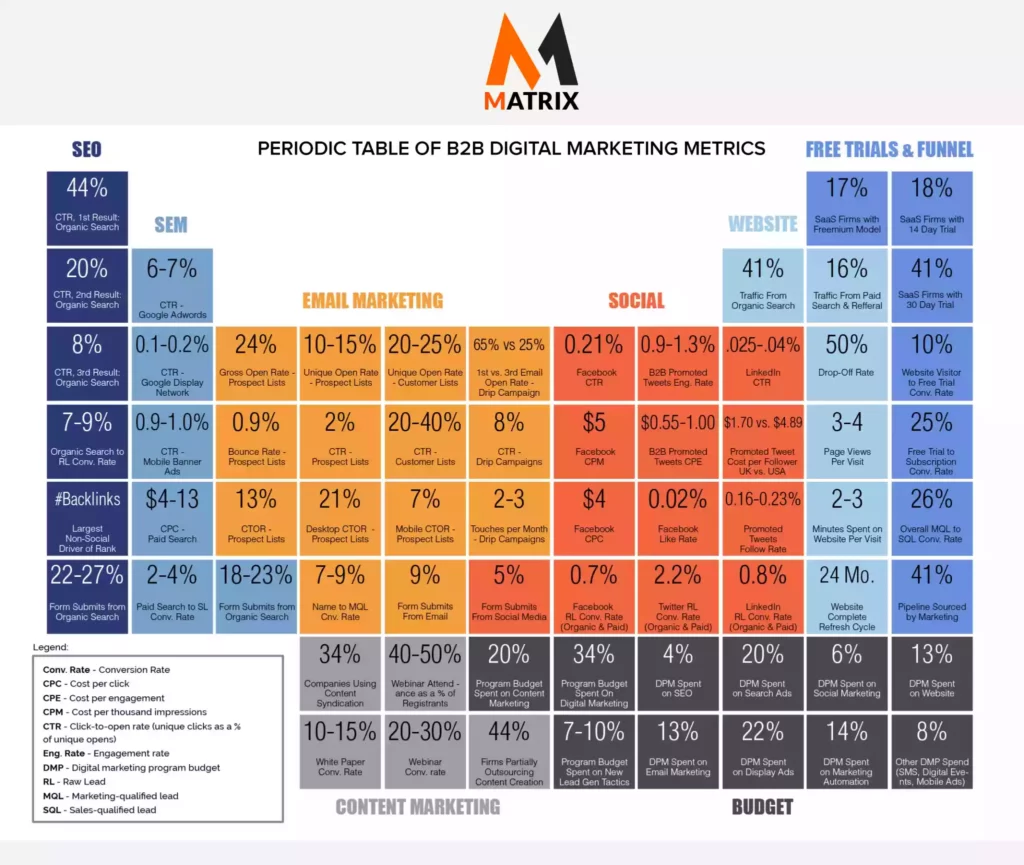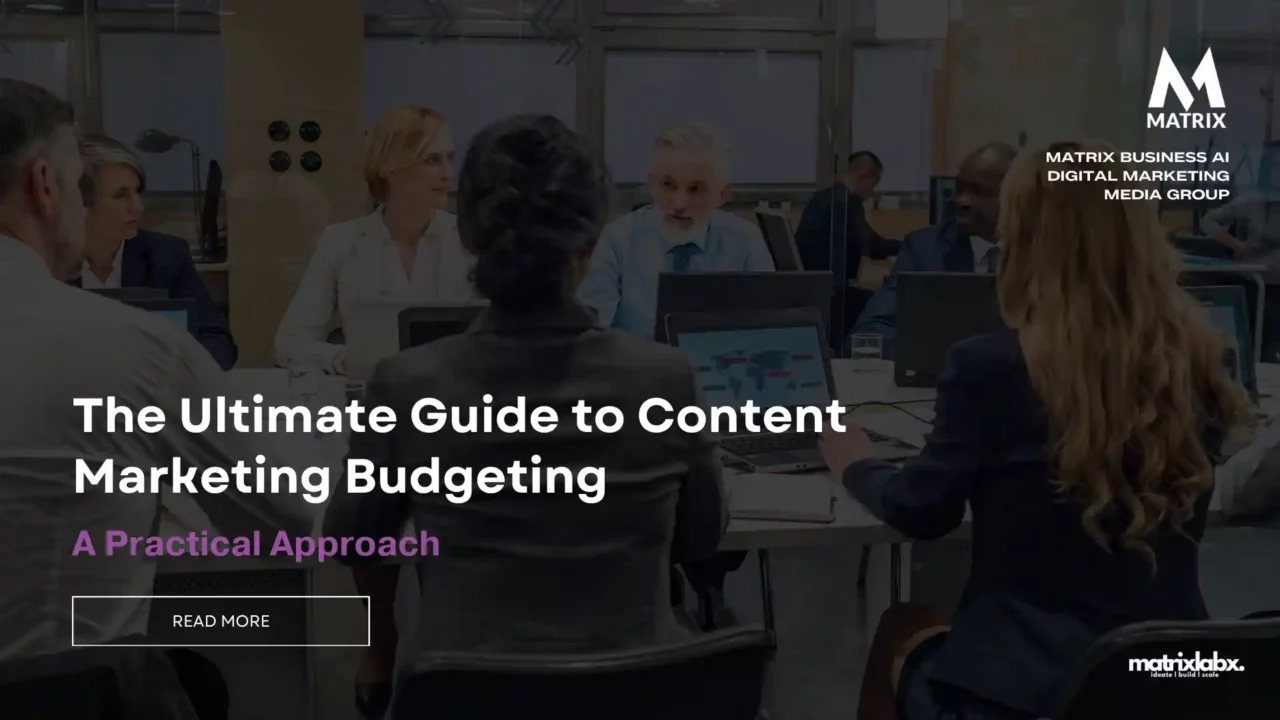The Ultimate Guide to Content Marketing Budgeting: A Practical Approach
Read About The Ultimate Guide to Content Marketing Budgeting: A Practical Approach
In today’s digital landscape, AIContentPad content marketing isn’t just a fad—it’s the backbone of many successful businesses.
Yet, navigating the turbulent waters of content marketing can be daunting. What if a clear, step-by-step guide offered a practical approach to this intricate process? Enter “The Ultimate Guide to Content Marketing Budgeting: A Practical Approach”.
This guide promises clarity for everyone grappling with allocating funds effectively. Whether you’re a seasoned marketer or just starting, understanding where and how to invest your resources is paramount.
Content marketing is both an art and a science; balancing the two requires finesse. By the end of this guide, you’ll not only grasp the nuances of AIContentPadbudgetingAIContentPad but also confidently make decisions that propel your brand to new heights. Ready to embark on this transformative journey?
Branch Models: Unlocking Scalable Growth
In the age of digital transformation, marketing managers are constantly seeking innovative ways to stay competitive and relevant. But how? Watch the video!

Detailed breakdown of how to allocate your content marketing budget:
Content Creation (40%)
- Content Writers: Allocate 20% of your budget to hiring and retaining skilled content writers. This includes in-house writers, freelance writers, and specialized writers for technical content.
- Content Editors: Allocate 10% of your budget to hiring and retaining experienced content editors. Editors ensure content quality, accuracy, and consistency with your brand voice. Content Translation Services: A Competitive Advantage for Your Business
- Content Designers: Allocate 10% of your budget to hiring and retaining talented content designers. Designers create visually appealing graphics, infographics, and other multimedia elements that enhance your content.
Content Distribution (30%)
- Social Media Marketing: Allocate 15% of your budget to social media management tools, advertising campaigns, and influencer partnerships. Utilize social media platforms to promote your content and engage with your target audience.
- Email Marketing: Allocate 10% of your budget to email marketing software and email list segmentation tools. Nurture relationships with potential and existing customers through targeted email campaigns.
- Search Engine Optimization (SEO): Allocate 5% of your budget to SEO tools and expertise. Improve your website’s search engine rankings to attract organic traffic and increase brand visibility.
Content Measurement and Analysis (20%)
- Content Analytics Tools: Allocate 10% of your budget to content analytics tools to track key performance indicators (KPIs) such as website traffic, engagement rates, and lead generation.
- Content Marketing Consultant: Allocate 5% of your budget to engage a content marketing consultant. A consultant can provide expert guidance and strategic recommendations for optimizing your content marketing efforts.
- Content Optimization: Allocate 5% of your budget to content optimization initiatives, such as A/B testing and repurposing. Continuously improve your content’s performance and maximize its impact.

What is Content Creation, and What Drive User Engagement?
What content creation is and what drives user engagement from the perspective of a content manager:
Several types of content consistently drive high levels of user engagement, attracting and retaining audiences across various platforms. These content formats cater to diverse preferences and interests, offering valuable information, entertainment, and opportunities for interaction.
- Videos: Visual content is highly engaging, capturing attention and conveying messages effectively. Videos can be used for tutorials, product demonstrations, storytelling, and behind-the-scenes glimpses, providing viewers with an immersive and engaging experience. Content Marketing Financial Firms
- Infographics are visual representations of data and information. They are excellent for simplifying complex topics and conveying key points in an easily digestible format. Their combination of visuals, text, and statistics makes them highly shareable and engaging.
- User-Generated Content (UGC): User-generated content, such as reviews, photos, and social media posts, fosters community and authenticity. UGC encourages interaction and participation, making users feel valued and engaged with the brand or platform.
- Interactive Content: Content that allows users to participate and interact, such as quizzes and polls, stimulates engagement and encourages active involvement. Interactive content breaks the monotony of passive consumption, keeping users engaged and interested.
- Long-Form Content: In-depth articles, blog posts, and whitepapers provide valuable information and insights, catering to those seeking deeper knowledge and understanding. Long-form content establishes thought leadership and credibility, attracting and engaging a loyal audience.
- Live Streaming: Real-time video broadcasts offer a sense of immediacy and connection, allowing viewers to participate in virtual events, product launches, and Q&A sessions. Live streaming creates a sense of urgency and excitement, driving engagement and interaction.
- Interactive Stories: Content that allows users to navigate through a story with choices and consequences, interactive stories provide an immersive and personalized experience. They cater to users’ desire for agency and decision-making, leading to higher engagement and retention.
- Gamified Content: Content incorporating game mechanics, such as points, badges, and leaderboards, motivates users to participate and compete. Gamified content taps into users’ desire for achievement and recognition, driving engagement and loyalty.
By incorporating these engaging content formats into your content strategy, you can effectively capture the attention of your target audience, fostering a loyal and active community around your brand or platform. Remember to tailor your content choices to your specific audience and align them with your marketing goals.
What is Content Creation?
Content creation is the process of planning, producing, and distributing valuable, relevant, and engaging information to a specific audience.
It encompasses a wide range of formats, including written content (blog posts, articles, social media updates), visual content (images, infographics, videos), and audio content (podcasts, webinars).
Effective content creation involves understanding your target audience, interests, and needs. It also requires creativity, strong writing and editing skills, and a knowledge of various digital marketing channels. Content Marketing for Construction Companies: 5 Easy Steps to More Projects
What Drives User Engagement?
User engagement is the interaction and interest users have with your content. It is a crucial metric for measuring the success of your content marketing efforts. High user engagement indicates that your content is resonating with your audience and that they find it valuable.
Several factors drive user engagement:
- Relevance: Content relevant to your target audience’s interests and needs is more likely to capture their attention and encourage them to engage.
- Quality: High-quality content that is well-written, informative, and engaging is more likely to keep users interested and coming back for more.
- Value: Content that provides users value, such as solving a problem, teaching them something new, or entertaining them, is more likely to drive engagement.
- Visual Appeal: Visually appealing content, such as infographics, videos, and images, can help to break up text-heavy content and make it more engaging.
- Social Proof: Positive reviews, comments, and social media shares can encourage other users to engage with your content.
- Interaction: Encouraging interaction with your content, such as through comments, questions, and polls, can help to build a community around your brand and keep users engaged. The Complete Guide to Content Marketing for Midmarket Companies
By understanding what drives user engagement, content managers can create content that is more likely to resonate with their audience and achieve their desired marketing goals.
AIContentPad – On-Brand Content
AIContentPad offers numerous advantages to on-brand content and corporate governance. It enables companies to streamline communication, improve compliance, and support decision-making processes through efficient and reliable content generation.
AIContentPad provides a scalable solution that helps companies uphold and exceed governance standards. This ultimately leads to better decision-making, stronger regulatory compliance, and enhanced organizational accountability.

What is Content Distribution, and What is the Best Strategy?
Content distribution is getting your content in front of the right audience at the right time. It involves identifying the channels where your target audience is most likely to be found and then using those channels to share your content. What is content marketing, and why is it important?
There are many different content distribution channels available, including:
- Owned channels: These are channels that you own and control, such as your website, blog, and social media profiles.
- Earned channels: These are channels where other people share your content, such as news websites, social media influencers, and industry publications.
- Paid channels: These are channels where you pay to have your content promoted, such as social media ads, search engine marketing (SEM), and content syndication.
The best content distribution strategy for a technology firm will vary depending on the company, its target audience, and its goals. However, some general principles can be applied to any strategy.
- Identify your target audience. Who are you trying to reach with your content? Once you know your target audience, you can identify the channels where they are most likely to be found.
- Create high-quality content. Your content should be informative, engaging, and valuable to your target audience. If you create high-quality content, people will be more likely to share it with others.
- Use a variety of channels. Don’t just rely on one channel to distribute your content. Use a variety of channels to reach a wider audience.
- Be consistent. Publish new content regularly so that your audience stays engaged.
- Track your results. Monitor how your content is performing on each channel. This will help you identify the most effective channels and adjust your strategy.
Here are some additional tips for content distribution for technology firms:
- Focus on industry publications. Industry publications are a great way to reach your target audience of technology professionals.
- Use social media to your advantage. Social media is a powerful tool for sharing your content with a wide audience.
- Partner with influencers. Influencers can help you to reach a wider audience and build credibility with your target market.
- Attend industry events. These are great opportunities to network with potential customers and partners and promote your content.
- Repurpose your content. Repurposing your content into different formats, such as infographics, videos, and blog posts, can help you reach a wider audience.
- Use paid advertising. Paid advertising can be a great way to reach a specific audience with your content. What is content marketing, and why is it important?
By following these tips, you can develop a content distribution strategy to help you reach your target audience and achieve your content marketing goals.
As a content manager, measuring and analyzing your marketing content is crucial for understanding its effectiveness and identifying areas for improvement.
Here’s a comprehensive guide on how to measure and analyze your marketing content:
Define Your Goals and KPIs:

Before diving into measurement, it’s essential to establish clear goals for your content marketing efforts. What do you aim to achieve with your content?
Are you looking to increase website traffic, generate leads, boost brand awareness, or improve customer engagement? Once you have clear goals, identify the key performance indicators (KPIs) to measure your progress.
Common KPIs include:
- Website Traffic: Measure the number of unique visitors to your website or landing pages.
- Engagement Metrics: Track metrics like page views, time on site, bounce rate, and social media shares to gauge audience engagement.
- Lead Generation: Measure the number of leads generated through your content, such as email signups or form submissions.
- Brand Awareness: Monitor brand mentions, social media sentiment, and website referral traffic to assess brand awareness.
- Sales and Revenue: Track how your content contributes to sales conversions and overall revenue growth.
Choose the Right Tools:
Several tools can assist you in measuring and analyzing your marketing content. Popular options include:
- Google Analytics: A comprehensive web analytics platform that provides in-depth insights into website traffic, user behavior, and conversion tracking.
- Social Media Analytics Tools: Native analytics tools like Facebook Insights and Twitter Analytics provide data on social media engagement, audience demographics, and campaign performance.
- Email Marketing Analytics: Email marketing platforms like MailChimp and Constant Contact offer analytics dashboards to track email open rates, click-through rates, and subscriber engagement.
- Content Marketing Analytics Tools: Platforms like BuzzSumo and Sprout Social provide insights into content performance, social media sharing, and influencer engagement.
Set Benchmarks and Track Performance:
Establish benchmarks for your KPIs to assess your content’s performance against industry standards or your past performance. Regularly track your KPIs to identify trends, measure progress towards goals, and make data-driven decisions about your content strategy. The Complete Guide to Content Marketing for Midmarket Companies
Analyze and Interpret Data:
Beyond collecting data, analyze it to uncover patterns, trends, and insights. Find correlations between content type, distribution channels, and engagement metrics to identify what resonates most with your audience.
Identify Areas for Improvement:
Use data analysis to pinpoint areas where your content can be improved. For instance, if certain content types or distribution channels underperform, consider adjusting your content strategy or exploring new channels.
Communicate Findings and Recommendations:
Share your findings and recommendations with stakeholders, including marketing, sales, and executives. Use data visualization tools to present insights clearly and compellingly.
Continuously Refine and Optimize:
Content marketing is an iterative process. Use insights from measurement and analysis to refine your content strategy, improve content quality, and optimize distribution channels for continuous improvement.
Remember, measuring and analyzing your marketing content is not just about numbers; it’s about understanding your audience, identifying what works, and making data-driven decisions to create content that drives business results.
How to do Measurement and Analysis of Your Marketing Content
As a content manager, measuring and analyzing your marketing content is crucial for understanding its effectiveness and identifying areas for improvement.
Comprehensive guide on how to measure and analyze your marketing content:
Define Your Goals and KPIs:
Before diving into measurement, it’s essential to establish clear goals for your content marketing efforts. What do you aim to achieve with your content? Are you looking to increase website traffic, generate leads, boost brand awareness, or improve customer engagement?
Once you have clear goals, identify the key performance indicators (KPIs) to measure your progress. Common KPIs include:
- Website Traffic: Measure the number of unique visitors to your website or landing pages. Content Marketing for Construction Companies: 5 Easy Steps to More Projects
- Engagement Metrics: Track metrics like page views, time on site, bounce rate, and social media shares to gauge audience engagement.
- Lead Generation: Measure the number of leads generated through your content, such as email signups or form submissions.
- Brand Awareness: Monitor brand mentions, social media sentiment, and website referral traffic to assess brand awareness.
- Sales and Revenue: Track how your content contributes to sales conversions and overall revenue growth.
Choose the Right Tools:
Several tools can assist you in measuring and analyzing your marketing content. Popular options include:
- Google Analytics: A comprehensive web analytics platform that provides in-depth insights into website traffic, user behavior, and conversion tracking.
- Social Media Analytics Tools: Native analytics tools like Facebook Insights and Twitter Analytics provide data on social media engagement, audience demographics, and campaign performance.
- Email Marketing Analytics: Email marketing platforms like MailChimp and Constant Contact offer analytics dashboards to track email open rates, click-through rates, and subscriber engagement.
- Content Marketing Analytics Tools: Platforms like BuzzSumo and Sprout Social provide insights into content performance, social media sharing, and influencer engagement.
Set Benchmarks and Track Performance:
Establish benchmarks for your KPIs to assess your content’s performance against industry standards or your past performance. Regularly track your KPIs to identify trends, measure progress towards goals, and make data-driven decisions about your content strategy.
Analyze and Interpret Data:
Beyond collecting data, analyze it to uncover patterns, trends, and insights. Find correlations between content type, distribution channels, and engagement metrics to identify what resonates most with your audience.
Identify Areas for Improvement:
Use data analysis to pinpoint areas where your content can be improved. For instance, if certain content types or distribution channels underperform, consider adjusting your content strategy or exploring new channels.
Communicate Findings and Recommendations:
Share your findings and recommendations with stakeholders, including marketing, sales, and executives. Use data visualization tools to present insights clearly and compellingly.
Continuously Refine and Optimize:
Content marketing is an iterative process. Use insights from measurement and analysis to refine your content strategy, improve content quality, and optimize distribution channels for continuous improvement.
Remember, measuring and analyzing your marketing content is not just about numbers; it’s about understanding your audience, identifying what works, and making data-driven decisions to create content that drives business results.
Tactical Plan for Content Marketing
- Define Your Content Goals: Identify what you want to achieve with your content marketing efforts, such as brand awareness, lead generation, or customer retention.
- Identify Your Target Audience: Understand your ideal customer’s demographics, interests, and pain points. Create content that resonates with their needs and preferences.
- Develop a Content Calendar: Plan and schedule your content creation and distribution efforts in advance. Ensure consistency and align content with seasonal trends or industry events.
- Create High-Quality Content: Invest in producing informative, engaging, and valuable content to attract and retain your target audience.
- Promote Your Content Effectively: Distribute your content using various channels, including social media, email marketing, search engine optimization, and paid advertising.
- Measure and Analyze Content Performance: Track key metrics regularly to assess the effectiveness of your content marketing efforts. Make data-driven decisions to improve content performance.
- Refine and Adapt Your Strategy: Continuously evaluate your content marketing strategy and adjust based on performance data and industry trends.
Using AI-driven content to produce better content faster and more affordable.
AI-driven content creation tools are transforming the way content is produced and consumed. These tools offer several advantages over traditional content creation methods, including:
Increased Productivity: AI tools can automate many tasks involved in content creation, such as research, writing, and editing. This can free human creators to focus on more strategic tasks, such as idea generation and content ideation.
Improved Quality: AI tools can analyze large amounts of data to identify patterns and trends humans might miss. This can help to create more accurate, informative, and engaging content.
Reduced Costs: AI tools can be more cost-effective than traditional content creation methods, as they can produce high-quality content at a fraction of the cost.
Scalability: AI tools can be easily scaled to produce large amounts of content, making them ideal for businesses that must produce a lot of content regularly.
Examples of AI-powered Content Creation Tools:
- Jasper AI: Jasper AI is an AI-powered writing assistant that can generate blog posts, articles, marketing copy, and more.
- Grammarly: Grammarly is an AI-powered grammar and spelling checker that can help you improve the quality of your writing.
- AIContentPad.
- Hemingway Editor: Hemingway Editor is an AI-powered writing tool that can help you to make your writing more concise and readable.
Actual ROI from Brands that Use AI-driven Content:
- Dell: Dell used AI-powered content creation to generate over 1 million blog posts in 2018. This resulted in a 20% increase in website traffic and a 15% increase in leads.
- Evernote: Evernote uses AI-powered content creation to generate personalized user recommendations, which has increased user engagement by 30%.
- The New York Times: The New York Times used AI-powered content creation to generate summaries of its articles, which resulted in a 25% increase in time spent on the site.
As AI technology develops, AI-driven content creation tools will become more powerful and affordable. This will make them even more attractive to businesses of all sizes, as they can help them to produce high-quality content faster and more affordably than ever before. The Complete Guide to Content Marketing for Midmarket Companies
AIContentPad is an AI-powered content creation platform that helps businesses create high-quality content faster and more affordably.
It uses various AI technologies, including natural language processing (NLP), machine learning (ML), and artificial intelligence (AI), to automate many of the tasks involved in content creation.
This can free human creators to focus on more strategic tasks, such as idea generation and content ideation.
Here are some of the key features of AIContentPad:
- AI-powered writing assistant: AIContentPad can generate blog posts, articles, marketing copy, and more. It can also improve the quality of your writing by providing suggestions for grammar, spelling, and style.
- Content optimization: AIContentPad can analyze your content to identify areas for improvement and provide suggestions for making it more engaging, informative, and relevant to your target audience.
- Content distribution: AIContentPad can help you to distribute your content to the right audience. It can identify the best channels to reach your target audience and then help you to distribute your content to those channels.
- Content analytics: AIContentPad can track the performance of your content. This can help you understand what is working well and what is not, and you can then use this information to improve your content creation strategy.
AIContentPad is a powerful tool that can help businesses of all sizes create high-quality content faster and more affordably. If you are looking for a way to improve your content creation process, try AIContentPad.
Here are some of the benefits of using AIContentPad:
- Increased productivity: AIContentPad can help you create content much faster than you could do it manually. This can free up your time to focus on other important tasks.
- Improved quality: AIContentPad can help you create high-quality content that is informative, engaging, and relevant to your target audience.
- Reduced costs: AIContentPad can help you save money on content creation costs by automating many of the tasks involved in content creation.
- Increased scalability: AIContentPad can help you scale your content creation efforts. It can create a large amount of content in a short amount of time.
If you are a business that needs to create a lot of content regularly, then AIContentPad is a great option. AIContentPad can help you create high-quality content faster and more affordably while freeing up your time to focus on other important tasks.
Some Content Samples















Examples of how AIContentPad can be used to create content:
- Blog posts: AIContentPad can generate blog posts on various topics. You can provide AIContentPad with a keyword or phrase, and it will then generate a blog post that is relevant to that topic.
- Articles: AIContentPad can be used to generate articles for various publications. You can provide AIContentPad with an outline for your article, which will generate the article for you. Content Translation Services: A Competitive Advantage for Your Business
- Marketing copy: AIContentPad can generate marketing copy for various purposes, such as website copy, social media posts, and email marketing campaigns. You can provide AIContentPad with a target audience and a product or service to promote, and it will then generate relevant marketing copy for that audience.
AIContentPad is a versatile tool for creating various types of content. Whether you need to create blog posts, articles, marketing copy, or something else, AIContentPad can help you finish the job.
















